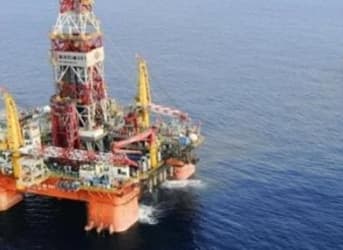It is generally accepted that in the U.S. – and increasingly, worldwide -- oil is a booming business. Over the last six months, the SPDR® Energy Sector ETF (exchange traded funds) has gained 12.6 percent, handily beating the S&P 500’s 7.9 percent increase over the same period.
Not all oil stocks are the same, however; while one sector is driving the increase, another is seeing sustained pressure on revenues, profits and stock prices.
Long-term investing success is about value, so the question that investors should be asking is: Are these depressed stocks cheap or are they doomed?
The boom has largely come from technological advances in the controversial practice of hydraulic fracturing, or “fracking,” and the resulting huge increase in production in previously unproductive shale oil deposits. Meanwhile, the technology that was considered the savior of the oil business before fracking became widespread, deepwater drilling, has been under enormous pressure.
Take two of the most commonly followed stocks in the sector, Transocean (RIG) and Seadrill (SDRL), for example. SDRL is just about flat in that same 6-month period, while RIG has collapsed, losing close to 50 percent. There are many reasons for this. In Transocean’s case, the prospect of further payouts relating to the Deepwater Horizon disaster is certainly one, but it comes down to this: recovering oil from fields deep underwater is expensive, and therefore that oil is less in demand.
Despite this, both Transocean, which reported earnings on Aug. 6, and Seadrill, which released their results on Aug. 27, beat analysts’ expectations for earnings per share (EPS) in the second quarter. One would think that would give some support to the stock, but gloomy forward guidance from both companies pushed the stocks down on the announcements. Despite that, they are both at levels now which make them worth considering for long-term investors.
In order to believe that, you have to believe two other things; that oil prices will begin to climb again and that the cost gap between offshore and other types of oil will close. Given the continued instability in the Middle East, continually growing global demand for oil, and the possibility of regulations and restrictions on fracking, I believe both of those things are likely.
Transocean faces the biggest uncertainty, given the possibility of more Horizon-related claims, but those payments look to be fully priced in at these levels. By any conventional metric, RIG looks cheap. It is trading at just over 10x forward earnings and over the last couple of days has shown signs that a bottom has been found at around $37.50.

When you consider that, even as offshore drilling has been under pressure, Transocean has beaten earnings estimates in each of the last four quarters, there would seem to be significant upside and limited downside to the stock. Factor in a juicy 9.23 percent yield and that downside looks even less scary.
Of course, if things stay tough in the offshore world, the dividend that results in that yield could be cut, but Transocean’s dividend was actually increased this quarter and Seadrill re-affirmed their current payout to shareholders, which equates to a 10.9 percent yield at current prices, until 2016.
SDRL also looks to be undervalued by traders at the moment with a forward price-earnings ratio (P/E) of 7.55. Of course, that P/E is based on estimates before this week’s downbeat guidance, but even after estimates are adjusted downwards, SDRL will still trade at a huge discount to the broader market.
ADVERTISEMENT

There is no doubt that both SDRL and RIG are cheap for good reasons, but both management teams remain confident in the long term outlook for their business, even as they shelve growth plans to weather the current downturn in their industry. Now might be a good time for long-term investors with a need for yield to step in.
By. Martin Tillier of Oilprice.com



















I have gone solar and drive an electric vehicle saving us $3500/year in "fuel" costs. At that rate the solar system would have fully paid for itself in less than 5 years.